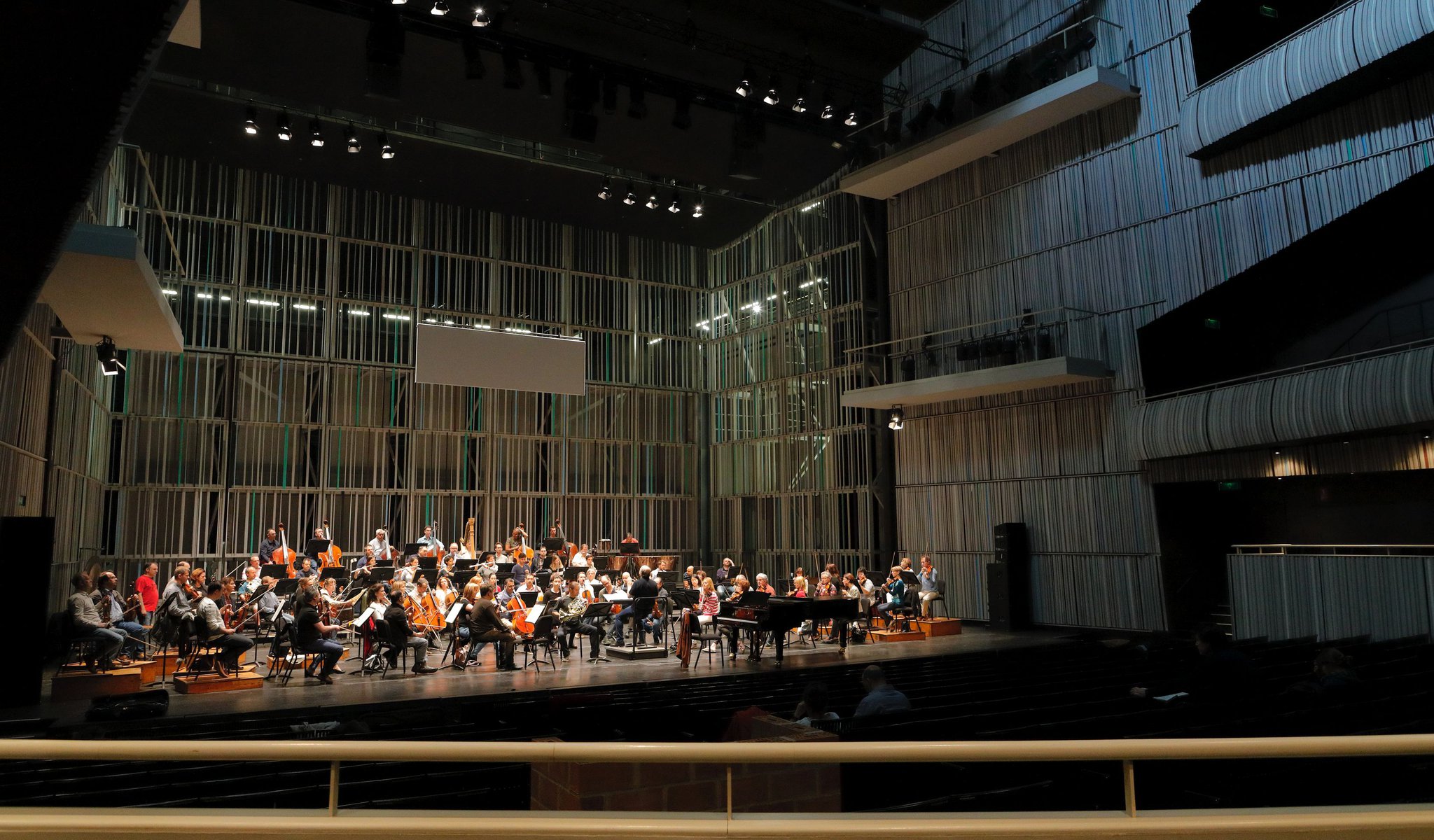
Program
Mauricio Kagel:
10 Marches to Miss the Victory (“10 Märsche, um den Sieg zu verfehlen”)
Astor Piazzolla (→ bio):
Tangazo
Maurice Ravel (→ bio):
Piano Concerto in G major, M. 83
Darius Milhaud:
The Ox on the Roof, Op. 58
Erik Satie (→ bio) — Claude Debussy (→ bio):
Gymnopedies No. 1
Erik Satie (→ bio) — Francis Poulenc:
Gnossienne No. 3
Maurice Ravel (→ bio):
La valse
Featuring
Other information
The event is about 2.5 hours long.
About the event
Marches, tangos, jazz, surreal Spartans and waltzes―it is hard to imagine a more colorful program. Though the concert features Argentinian and French composers active around the turn of the last century and in the last century, all of whom were eccentrics, their iconoclastic, odd personal styles add up to a harmonious yet satisfyingly diverse unity. Kagel’s entertaining music, Piazzolla’s melancholy, Ravel’s buoyancy, Milhaud’s exoticism and Satie’s unique mindset all promise an unforgettable experience. So does the soloist for the evening, Seong-Jin Cho from South Korea, who rose to fame after winning the International Chopin Piano Competition in 2015, and had a tour with Iván Fischer and the Festival Orchestra in 2019.
Kagel, who was born in Argentina but spent most of his life in Germany, is mostly known for his incidental music for the theatre. He passed away in 2008. The title of his 10 Marches to Miss the Victory is not the only unusual thing about the piece. The orchestration, the spacial position of the parts and their actual pitch are all decided by the performers. This virtuosic, funny piece filled with clichés of marches is put together on the stage, without prior consultation, as the musicians adapt to each other.
“Those classical musicians are like that”, said Piazzolla after the premiere of Tangazo, referring to the contrasting worlds of tango and classical music. The conventional concert hall atmosphere is disrupted by the sinuous, lamenting melodies and the erotic slides (glissandi) of the piece.
According to Ravel’s account, his Piano Concerto in G major, composed in 1928, is nothing but a string of cheerful and occasionally jazzy tunes. Nonetheless, there’s obviously much more to it than fake glamour. The music is virtuosic and enigmatic, playful and magnificent at the same time, with unmistakably Ravelian jazzy sections.
Though it was originally intended as incidental music for a Chaplin movie, it ended up as a surrealist ballet: Milhaud’s music conjuring up Brazilian scenes was snapped up by Cocteau in 1919 to create his ballet featuring slow motion as well as artists, clowns and dwarfs. Though it has hardly ever been performed in this form, the music incorporating popular dance tunes continues to be a favorite concert piece.
With his bowler hat, umbrella, grotesque writings and unmistakable musical style Satie stuck out from the 19th-century Parisian scene. His most famous piano pieces (Gymnopedies) took their title from a Spartan festivity where young men danced and wrestled with each other in the nude. And what does the likewise free and melancholic gnossienne mean? Only the inventor of the word, Satie knows.
When Diaghilev commissioned a ballet from Ravel in 1919, the composer wrote La valse as a tribute to Viennese waltz and Johann Strauss II, making a long-time dream come true. The music that the ballet director considered abhorrent and unfit for dance, was eventually immortalized as an independent composition.